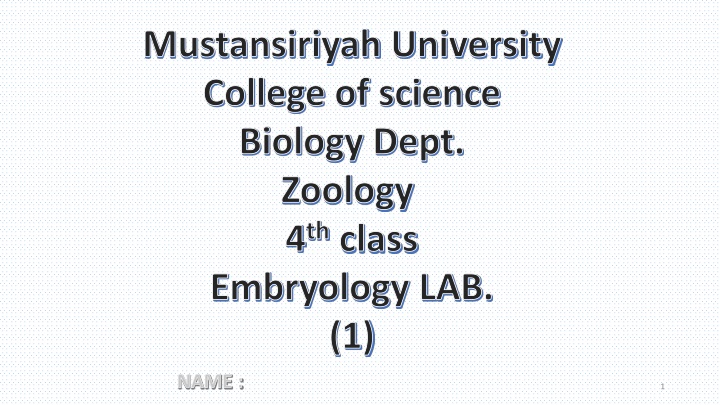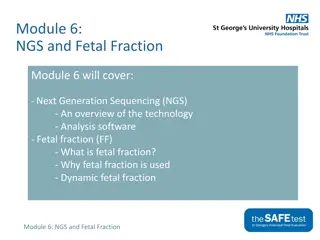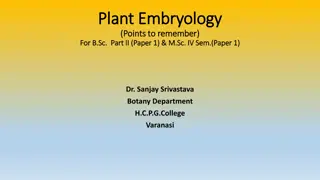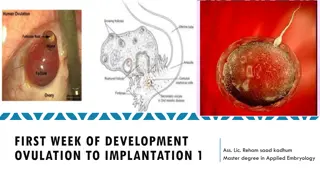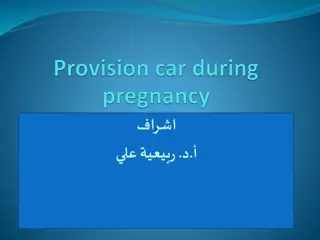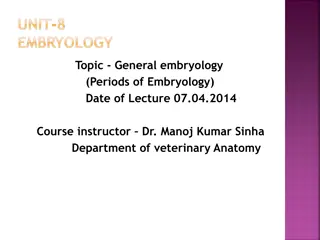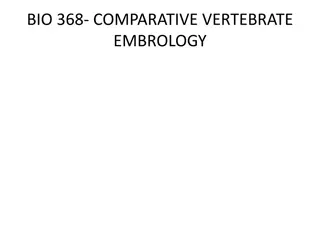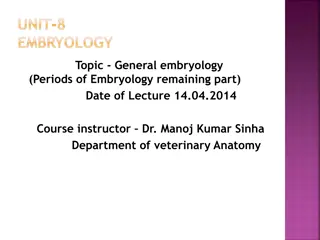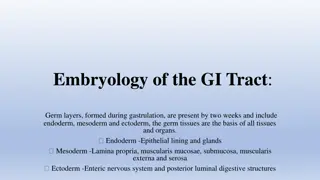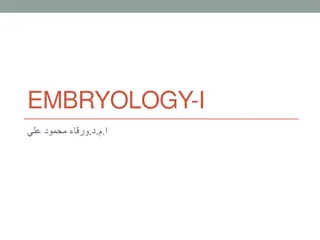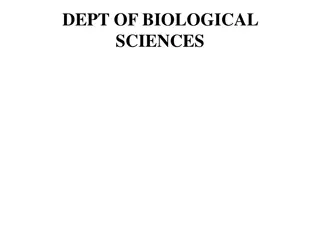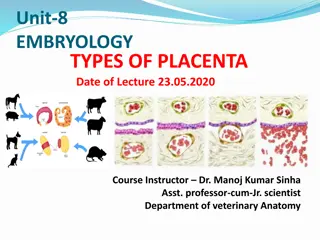Embryology: Study of Prenatal Development and Fertilization
Embryology is the branch of biology focusing on gamete development, fertilization, and prenatal embryonic and fetal growth. It covers congenital disorders, stages of development, and cell division processes. From the formation of a morula to the differentiation into a blastocyst, the intricacies of embryonic development are explored. The significance of early stages, vulnerabilities to environmental agents, and the formation of essential structures like placenta and organs are key aspects of this field.
Download Presentation

Please find below an Image/Link to download the presentation.
The content on the website is provided AS IS for your information and personal use only. It may not be sold, licensed, or shared on other websites without obtaining consent from the author.If you encounter any issues during the download, it is possible that the publisher has removed the file from their server.
You are allowed to download the files provided on this website for personal or commercial use, subject to the condition that they are used lawfully. All files are the property of their respective owners.
The content on the website is provided AS IS for your information and personal use only. It may not be sold, licensed, or shared on other websites without obtaining consent from the author.
E N D
Presentation Transcript
Mustansiriyah University College of science Biology Dept. Zoology 4thclass Embryology LAB. (1) NAME : 1
EMBRYOLOGY EMBRYOLOGY Embryology is the branch of biology that studies the prenatal development of gametes (sex cells), fertilization, and development of embryos and fetuses. Additionally, embryology encompasses the study of congenital disorders that occur before birth. Gamete is a haploid cell that fuses with another haploid cell during fertilization (conception) in organisms that sexually reproduce. female is produces the larger type of gamete called an ovum (or egg) male produces the smaller tadpole-like type called a sperm. Human development begins when a spermatozoon fertilizes an oocyte. an embryo comprises the tissues formed once mitosis of an ovum (a fertilized oocyte) begins; thus even at the two-cell stage it is an embryo. 2
Stages of development before birth Stages of development before birth 1. Pre-embryonic period. Time : conception week 2 Event: a. Fertilized ovum b. Formation of morula until blastocyst implanted. 2. Embryonic period. Time : 2nd week 8th week Event: a. germ layer + placenta development. b. main body system form. 3. Fetal period. Time : 8th week birth. Event : Further growth + development of organs. 4. Crucial period : potential for malformation in the first 8 weeks ( the embryo is most vulnerable to environment agent such as viruses and other teratogenic. 3
A fertilized ovum has a diploid number of chromosomes and once the second meiotic division has been completed, the stage of cleavage can begin. This consists of a series of rapid mitotic cell divisions in which the ovum divides over a period of about 3 days, resulting in the so-called 16-cell-stage embryo. Each cell is known as a blastomere. After each cleavage division, the number of cells increases, the size of each cell diminishes. The solid sphere of cells that forms is known as a morula. 4
The morula soon shows signs of further differentiation. Cavities appear within the center of the sphere of cells, forming a blastocyst, the cavity itself being the blastocoele. Once this stage has been reached the outer layer of the blastocyst soon thins to single-cell thickness to become the trophoblast, enclosing the enlarging fluid-filled blastocyst cavity. The central group of cells move to one pole of the blastocyst (the embryonic pole) to form the inner cell mass from which the whole embryo itself will form. The trophoblast contributes to the fetal component of the placenta. 5
Approximately 1224 hours after ovulation, Fertilization takes place in the ampulla of the uterine tube. At about 30 hours post-fertilization, The first mitotic division of cleavage will be completed by the time that the two-cell stage embryo reaches the middle of the tube. By 3 days the morula of 12 16 cells will have reached the junction of the uterine tube and the uterus. By 4 5 days the fully formed blastocyst reaches the uterine lumen in preparation for implantation, which occurs a day later. 6
